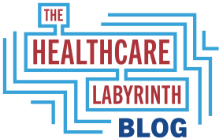My latest blogs have touched upon the fact that while Medicare Advantage (MA) continues to grow, MA plans in the program are facing a number of financial challenges:
- Rising utilization and medical expense
- A new prior authorization rule that will tie their hands and further drive up costs
- A new Risk Adjustment Data Validation (RADV) rule that exposes the industry to huge recoupment risks
- Poor Star achievement scores and bonuses
- And much, much more
While MA plans prepared for the worse, the advanced notice of MA payments for 2025 could very well compound the problem, even with increased enrollment – which is robust and driven by the clear difference between the value of MA vs. the traditional fee-for-service (FFS) program. It will remain that way. See my last blog on all this: https://www.healthcarelabyrinth.com/with-boom-over-will-medicare-advantage-collapse-or-adjust/
So let’s take a look at the advanced 2025 MA rate notice.
Controversy over calculations
Each year there is a robust debate on how to even calculate what the year over year increases will be in MA. It revolves around risk score trends. Risk scores tend to inflate each year in the program. MA plans would argue risk scores predict the costs of medical expense, so increases should not be counted in estimates of annual rate increases. Others, including the Centers for Medicare and Medicaid Services (CMS), count the estimated risk score trend in the overall calculation of the increase in revenue to MA plans from year to year.
The truth is probably somewhere in between. Some of the trend does respond to increased risk that will translate into medical expense, while part also likely ties more toward what some would call over-coding on the part of MA. (While I say this, I do not side with the critics who claim huge overpayments exists in MA. I do believe that much of the difference between risk scores in the FFS program (everyone is scored) and MA ties to the lack of incentive for providers to adequately document risk in the transactional payment system in FFS.) There are also annual battles over how much the trend in risk scores might be, with plans usually arguing the CMS estimates are too high.
MA plans don’t count it as an increase because they have always relied on annual risk score trends to construct benefits, compete in regions, and be as generous as possible. In essence, when base rate increases are lean, that impacts their available money to continually juice benefits. In the truest sense, available revenue increases are coming down at a time when medical expense is going up. See more below.
For the sake of argument in this blog, I will state revenue trends with and without the risk score trend and avoid the controversy.
2025 vs. 2024
MA had some very good payment rate years in 2022 and 2023, but that came to an end in 2024 with payment rates that were roughly flat when not factoring in risk score trends. The same holds true for 2025 proposed rates. I have created the following table showing 2024 and 2025 below. Following the table are some explanations.
The 2024 final and 2025 proposed MA payment rate increases are as follows. This is for the main model only:
| Comparing 2024 Final and 2025 Proposed MA Rate Increases | 2024 Final | 2025 Proposed |
| Effective Growth Rate | 2.28% | 2.44% |
| Changes in Star Revenue (Overall) | -1.24% | -0.15% |
| Rebasing | 0.00% | TBD |
| Coding Pattern Adjustment | 0.00% | 0.00% |
| Risk Model Revision and Normalization | -2.16% | -2.45% |
| Increase Without Risk Score Trends | -1.12% | -0.16% |
| Anticipated Risk Score Trends | 4.44% | 3.86% |
| Increase with Risk Score Trends | 3.32% | 3.70% |
A few explanations
- The effective growth rate (EGR) is derived from the growth in the per capita costs in the traditional FFS program. The EGR likely will be revised upward when the notice is finalized. Remember that the eventual county benchmarks are adjusted from there based on several parameters, including whether a county is at 95% up to 115% of FFS costs.
- Star revenue changes are a global estimate as well. Each plan will have a different result based on their actual Star performance by contract and eligibility for bonus revenue. Those losing bonus revenue can see a much bigger year-over-year reduction in revenue. Those maintaining Star could see additional revenue due to enrollment growth. Those gaining bonus revenue for the first time would see a great jump. The negative number for Star revenue is a sign that program-wide plans lost Star power and 4 Star or above Star ratings of late.
- Rebasing relates to changes in the average geographic adjustment index (GAI), which adjusts for spending differences across regions/counties. This usually is a small tenths of a percentage point impact and will be released with the final notice. The rebasing could be positive or negative in a given year and actual impacts are really seen at the local county or regional level. The rebasing number simply reflects the nationwide impacts of changes in the GAI.
- The coding pattern adjustment is a statutory/regulatory reduction taken to MA rates for the perceived differences in risk scores between MA and FFS. This gets to the controversy about whether MA plans over-score members. You know my thoughts on this – it is a bit of a mixed bag in my opinion. The coding intensity adjustment has been set at negative 5.91% for years now and CMS has not yet changed it, despite pressures from critics who say over-reimbursement has risen well beyond that negative factor.
- There is the normalization factor adjustment captured within Risk Model Revision and Normalization. The normalization factor ensures the average risk score stays at 1.0 and adjusts from the data year in the model to the payment year. This is different than coding intensity.
- The risk model change is responsible for the biggest impact in the Risk Model Revision and Normalization category. In 2024, CMS announced it was updating the risk model and made many major changes, including:
- Condition categories are restructured from ICD-9 to ICD-10.
- The underlying FFS data years are revised.
- There are some revisions focused on reducing the sensitivity of the model to conditions with more coding variation and that has generated some controversy.
- The new model should reflect more current costs associated with various diseases, conditions, and demographic characteristics. Average risk scores may change over time in FFS.
- In a concession to plans in 2024, CMS decided to phase in the new risk model change by using one-third in 2024, two-thirds in 2025, and 100% in 2026.
- In general, when fully phased in, the risk model change will reduce revenue by up to 7% (including the normalization factor, which goes hand in hand with the calculations here). This is the biggest issue plans have – the risk model change is zeroing out the effective growth rate increase. Without taking into account the normalization factor, the impact is higher.
- As I noted, the anticipated risk score trend is a national number calculated by CMS. Individual plans will see various increases or decreases. There is concern about the updated risk model’s impact on dually eligible individuals in MA. CMS said it computed the expected risk score trend for dual eligibles at 4.33 percentage points higher than for non-dually eligible individuals.
Other financial changes include:
- Benchmark rate percentages against FFS remain the same at 95% to 115% of FFS in the county.
- The Star bonus remains at the same 5% level and applies only to those with 4 Star ratings or greater.
- The premium rebate percentage (plan base bid against the county rate) which goes to added benefits remains the same based on Star performance:
- Less than 3.5 Star = 50%
- 3.5 and 4 Star = 65%
- 4.5 and 5 Star = 70%
- Part D Risk Corridors remain the same.
In the end, what we see are two years of flat or negative overall rate hikes. With risk scores, we see an increase of over 3% the past two years, which is still well below 2022 and 2023 levels.
Other policy and technical changes
Puerto Rico – Given the low rates in Puerto Rico, poverty, and penetration in MA, CMS would continue basing the MA county rates in Puerto Rico on the relatively higher costs of individuals in FFS who have both Medicare Parts A and B and applying an adjustment regarding the propensity of individuals with zero claims.
Additional Medicare drug changes – The Inflation Reduction Act (IRA) makes additional changes to Part D in 2025, including the elimination of the coverage gap phase to create a three-phase benefit (deductible, initial coverage, and catastrophic) and cap annual out-of-pocket costs at $2,000.
Part D risk adjustment – a series of changes include:
- Update the model to reflect the redesign of the Part D benefit as required by the IRA, including the increase in plan liability given the $2,000 cap on annual out-of-pocket spending for CY 2025, and the new Manufacturer Discount Program.
- Calibrate the model using newer data years as well as proposes updates to the normalization methodology to reflect differences between Medicare Advantage prescription drug (MA-PD) plan and stand-alone prescription drug plan (PDP) risk score trends.
Star measures – a series of changes include:
General changes:
- The list of eligible disasters for adjustment
- Non-substantive measure specification updates
- The list of measures included in the Part C and D Improvement Measures
- The Categorical Adjustment Index for the 2025 Star Ratings.
Specific changes:
- Dropping a question on the “Getting Appointments and Care Quickly” measure
- Announced the 2025 Star measures with weighting. CMS also announced that starting with the 2024 measurement year (2026 Star Ratings), the weight of patients’ experience and complaints and access measures will be reduced to two.
- CMS is considering changes to measures for 2025 measurement year and beyond. Details are provided in the Advance Notice: https://www.cms.gov/files/document/2025-advance-notice.pdf .
- COA Pain Assessment could be retired as early as the 2025 measurement year and a new measure could be introduced over time
- There is a detailed discussion of display measures – changes, retirement, and new – as well as development of new measures. Two I would call out include interest in Follow-Up After Hospitalization for Mental Illness (Part C) and Social Need Screening and Intervention (Part C)
#medicareadvantage #rates #payments #2024
— Marc S. Ryan





